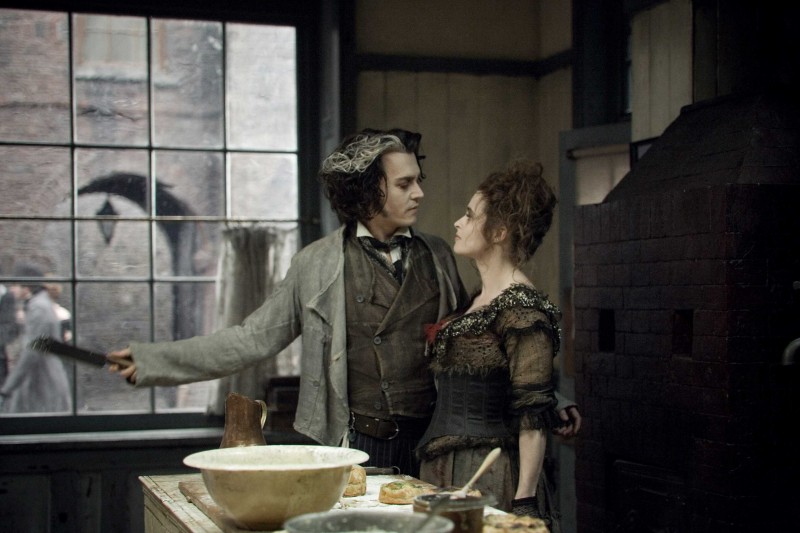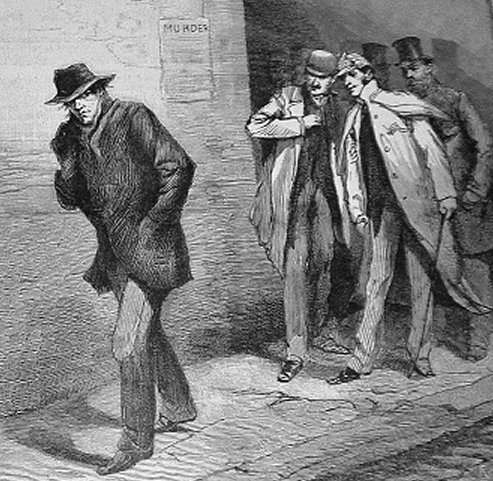From modern serial killers to stories of horrific Victorian skullduggery, London has a lurid history of murders and murderers.
Vagabondish is reader-supported. When you buy through links on our site, we may earn a small affiliate commission. Read our disclosure.
You can easily take a murder tour of London — though not all the murders here are real; two are complete fabrications (see if you can work out which: answers at the bottom of this post). We start our tour in West London, working north and then eastwards.
Our first stop is 10 Rillington Place — or rather it isn’t; after the famous murders, the street was renamed Ruston Close and in 1970 it was demolished. There’s not a lot to see here now at St Andrew’s Square, off Bartle Road in Ladbroke Grove, but the story is terrible. John Christie murdered his wife and at least seven more women and hid the bodies beneath the floorboards and behind the walls of his house. In a terrible miscarriage of justice, his tenant Timothy Evans was found guilty of two of the murders and hanged — it was only three years later that Christie was put on trial, after the bodies of more of his victims were found. Better to see the film 10 Rillington Place or visit the interesting 10-rillington-place.co.uk.
Head into Belgravia to visit the fine terraced houses of Belgrave Street, mute witnesses to the mystery of the murder of Lord Lucan’s nanny, Sandra Rivett, who was bludgeoned to death in 1974, at number 46. Lady Lucan was viciously attacked at the same time and was absolutely certain that her husband had done it — but we will never know, since Lord Lucan disappeared and was never seen again, though people do sometimes claim to have seen him working in a chip shop with Elvis Presley.
The most gruesome detail is that he apologised for not being able to remember how many people he had killed.
From the high class of Belgravia we head to the leafy suburbs of north-west London and 195 Melrose Avenue, Cricklewood. Here Dennis Nilsen killed at least 15 young men between 1978 and 1983. He chopped them up and disposed of them in garden bonfires, or even just by dumping their innards over the garden fence to be eaten by foxes. When he moved from Cricklewood to the attic flat at 23, Cranley Gardens, Muswell Hill, he had to change his disposal methods; after the bin bags of body parts stored under his wardrobe began to smell, he started flushing the flesh down the toilet. When the drains got blocked, he was found out. The most gruesome detail of the entire story is that he apologised to police for not being able to remember exactly how many people he had killed.
Heading back towards the centre of London, we’ll take in a visit to number 39 Hilldrop Crescent, Camden Road, Holloway, where Crippen did away with his wife. Doctor Crippen is one of London’s finest murderers, though he was in fact American. He murdered his wife, a music hall singer, and sailed to Canada with his mistress, Ethel le Neave, dressed as a boy, after the body was discovered in his cellar. There’s some doubt though whether he intended to murder her — it’s possible that he simply botched a dose of depressant and then panicked. Whatever the truth, he ended up on the gallows in Pentonville Prison.

Now we’ll head for the City and East End where there’s a nice little cluster of murders. Start in Fleet Street, where once upon a time Sweeney Todd had his barber shop at number 186. He had already experimented with picking his customers’ pockets, when he had the bright idea of murdering them by the simple expedient of cutting their throats with his razor as they sat in the barber’s chair, and stealing everything they had on them. He then had the further brainwave of getting his wife to bake them into pies. It’s a great story and it makes a great musical too.
She made a pact with the devil to gain a fortune, and as such contracts often do, this one ended bloodily.
A little further north in Farringdon is Bleeding Heart Yard — a gory name with a story to match. Lady Elizabeth Hatton is said to have been found here “torn limb from limb, but with her heart still pumping blood” in 1626. She had made a pact with the devil to gain a fortune, and as such contracts often do, this one ended bloodily.
Make your way to Fenchurch Street Station. I’ve always found the back streets here a little creepy. Nearby is St. Olaves, its churchyard guarded by two grinning skulls on the gateposts, so I’m not surprised that this station saw the start of a rich tradition of railway murders. In 1864, Franz Muller committed the first murder aboard a British train, robbing and killing a City banker and throwing the body out of the carriage between Fenchurch Street and Hackney Wick. Mueller fled to New York — but a faster ship was sent in pursuit and he was arrested on arrival and brought back to London for trial.

Jack the Ripper © [unknown]
Moving out of the City into the East End head for Whitechapel, home of Jack the Ripper, the quintessential London murderer. His story has all the essential ingredients bar Sherlock Holmes — bumbling police, pea-souper fogs, Whitechapel slums and even strange occult links. Unlike the other murderers, his celebrity has created a whole industry of books and tours — perhaps because no one has ever satisfactorily solved the mystery of who he really was. The traffic-ridden, busy Whitechapel High Street today doesn’t give you a great flavour for the crime, but if you go on one of the Jack the Ripper tours, particularly on a winter evening after dark, you’ll see the seamy side of the area, and the stories will chill your blood.
There must be something about the East End that encourages murder, as just a few streets to the south the Ratcliff Highway murders were a sensation in the early nineteenth century. Two families were butchered in their homes. A young Irish seaman was arrested for the murders but hanged himself in Coldbath Fields prison. His body was buried with a stake through the heart at the junction of Commercial Road and Cannon Street Road and was discovered when the gas mains were laid, several decades later.
Our final stop is Deptford, way out along the Thames, where playwright Christopher Marlowe was murdered in a tavern in 1593. By the stroke of a dagger we were deprived us of a writer who might have become equal in status to Shakespeare. Some believe he was a spy working for Queen Elizabeth’s spymaster, Walsingham, and was assassinated to prevent him turning double agent; others believe that his death was in fact faked and he continued writing … under the name of William Shakespeare.
Map: A Guided Tour of London Murder Locations
Check out the full map.
Did you spot the two myths?
They were Sweeney Todd and Lady Elizabeth Hatton. Sweeney Todd’s story is attested in many sources — but not in the full accounts we have of London trials and executions.
And the story of Bleeding Heart Yard is a total fiction first found in the Ingoldsby Legends of 1837; Lady Elizabeth was still alive in 1646, twenty years after the alleged murder. In fact, the name of the yard probably recalls an old pub with a sign showing the heart of the Virgin Mary pierced by swords — a pre-Reformation sacred symbol.
To stay somewhere central to do the above tour of London murder locations my favourite London luxury suites may offer suitably safe refuge.



